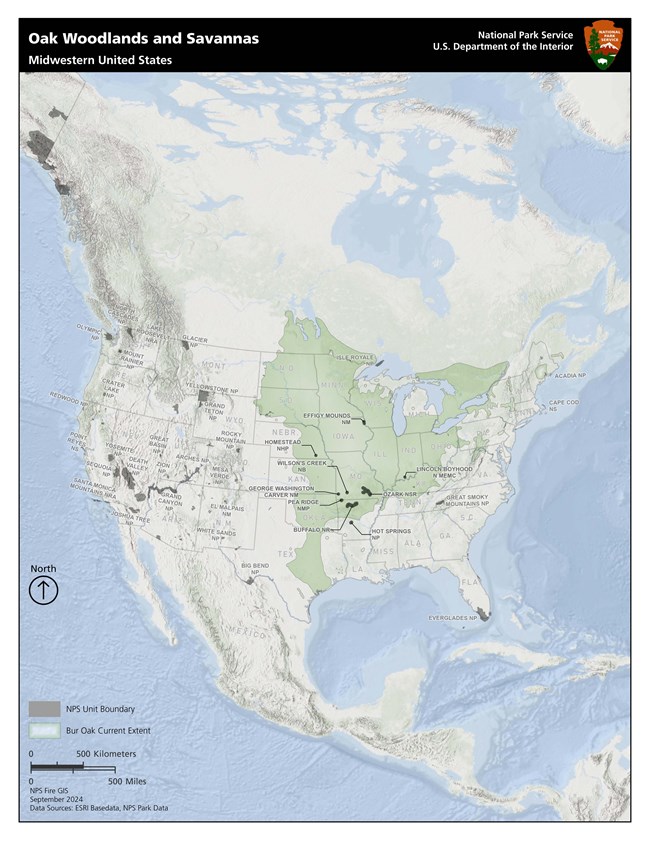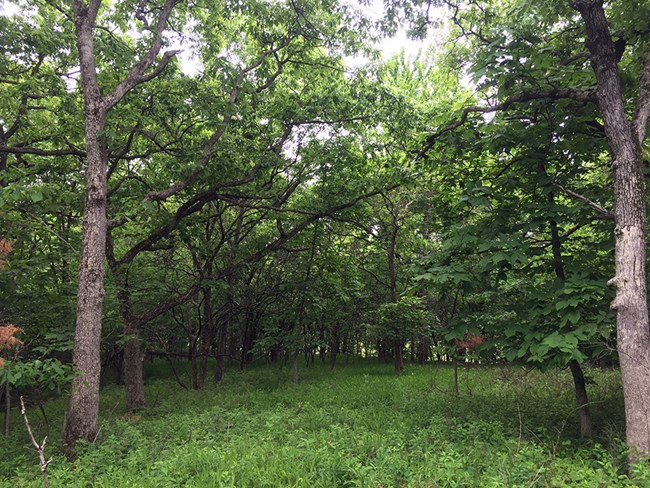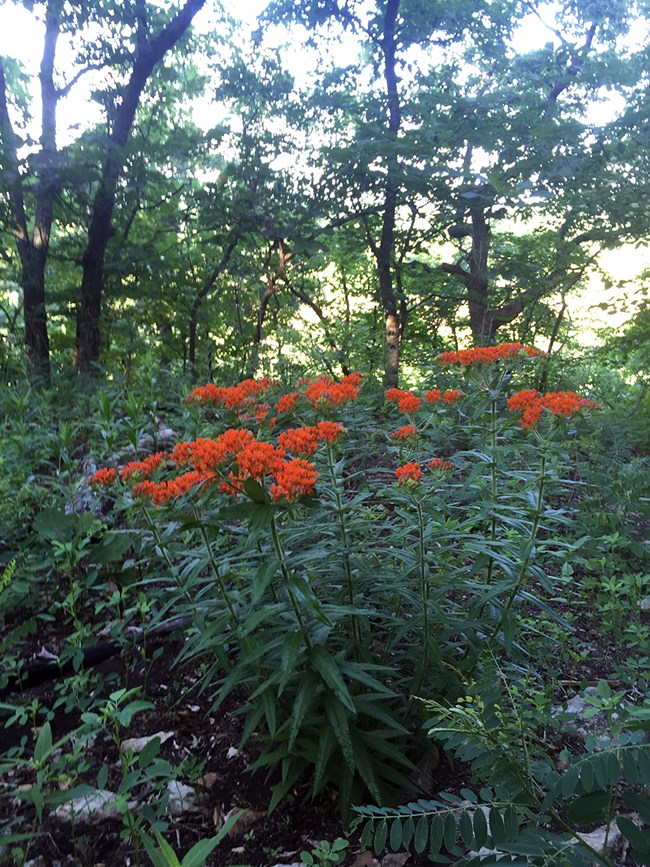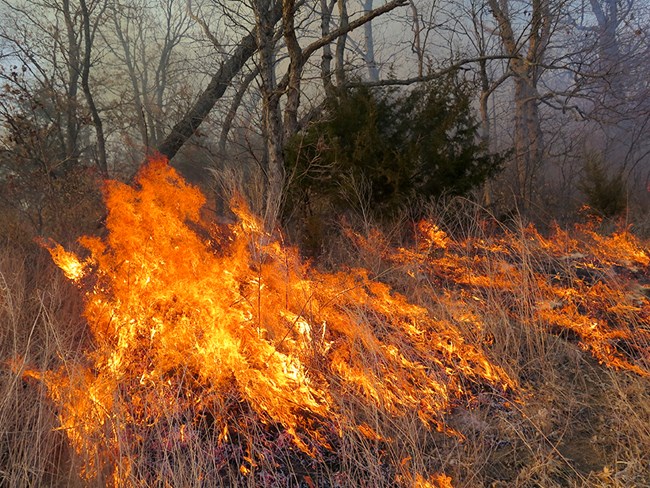Last updated: March 4, 2025
Article
Wildland Fire in Oak Woodlands and Savannas of the Midwestern United States

Distribution and General Characteristics
Oak woodlands were prominent across the landscape in the central United States. Historically, they occurred in all Midwestern states; the Central Great Plains served as the border on the west, and the Eastern Deciduous Forest to the east. Savannas and forests often intermix with oak woodlands.

M SHORT, Used with permission.
These woodlands are quite variable in tree density. For example, an oak woodland can cover anywhere from 30% to 100% of the canopy. Overstory trees are less dense in oak woodlands than oak forests. Oak woodlands do not have much woody midstory, and have a patchy, sparse woody understory. The open tree canopy of woodlands results in dense ground plants rich in forbs, grasses, and sedges.

M SHORT, Used with permission
Historic Role of Fire
Oak woodlands depend on disturbances like fire to survive. Frequent fire created and maintained the open structure and make-up of the woodlands. Before European settlement, fires would burn every 3 to 20 years. Most often, they were low-intensity surface fires. In the central United States, humans were the main source of fire on the landscape before and after European settlement.
Oaks have adaptations that make them very successful at surviving fire. Oaks can resprout after fire because of their large root systems and their root collar buds below the ground. Oaks also have thick bark, which helps to protect the trees from fire. Frequent fire also benefits forbs, grasses, and sedges in the understory. On the opposite side, fire kills the above ground stems of vines, shrubs, and other woody vegetation.

M SHORT, used with permission
Current State and Management Actions
Today, there are fewer oak woodlands across the central United States. Oak woodlands are converting into forests due to a lack of fire. Without fire, trees that cannot survive fire, and other woody plants, begin growing in and invading woodlands. Trees become denser and the canopy begins to close. Fewer forbs, grasses, and sedges grow because less light reaches the ground. In addition, oak trees do not regrow well under a closed canopy. Oak woodlands need frequent fire to survive. Prescribed fire has many benefits for the oak woodlands – fewer trees, less woody plants, and more forbs, grasses, and sedges under the trees. The combination of tree thinning and prescribed fire can help to restore and maintain oak woodlands.
Additional Information
- Vegetation Community Monitoring at Hot Springs National Park, Arkansas
- Vegetation Community Monitoring at Lincoln Boyhood National Memorial, Indiana
- Homestead National Monument of America 2015 Prescribed Fire Monitoring Report
- The Fire Ecology of Ozark National Scenic Riverways
- Impact of Multiple Disturbances at Manley Woods, Wilson’s Creek NB - summary
- Effects of multiple intense disturbances at Manley Woods, Wilson’s Creek National Battlefield - full report
- Vegetation Community Monitoring at Homestead National Monument of America, Nebraska: 1998-2009
Tags
- buffalo national river
- effigy mounds national monument
- george washington carver national monument
- homestead national historical park
- hot springs national park
- lincoln boyhood national memorial
- ozark national scenic riverways
- pea ridge national military park
- wilson's creek national battlefield
- oak woodland
- wildland fire
- nebraska
- iowa
- illinois
- indiana
- missouri
- arkansas
- fire ecology
- learning in depth
- fire in ecosystems
- fire facts
